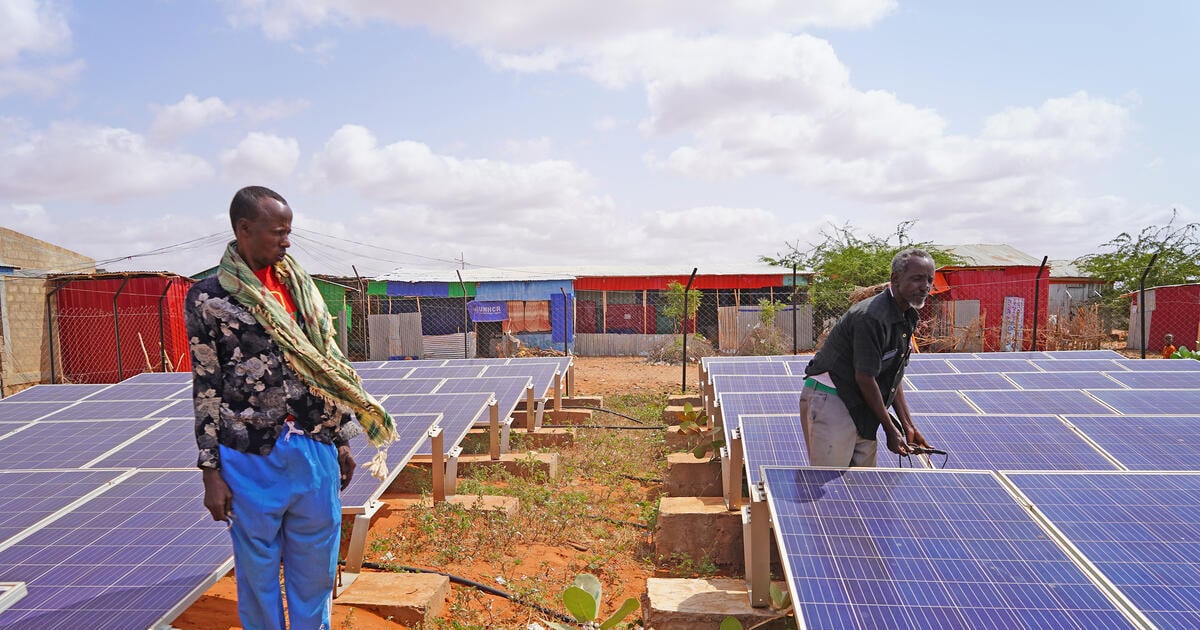The sprawling Kakuma refugee camp in northwestern Kenya grapples with significant obstacles when providing electricity and lighting. Established in 1992, the camp is home to primarily refugees from South Sudan, Somalia, Ethiopia, and other countries that are at war.
Despite efforts to improve infrastructure, electricity remains unreliable, affecting daily life and security within the camp. Many residents rely on solar lanterns or makeshift lighting solutions, often needing more for safety and education after dark.
This situation underscores ongoing struggles in providing adequate resources to a vulnerable population, highlighting the complex issues faced by refugees in one of Kenya’s largest refugee settlements.
Read also: Exploring Solynta Energy Solar Solutions and traditional energy sources
Brightening Lives in Kenyan Refugee Camps with Chinese Solar
China’s solar technology powers a mini-grid at the Kakuma Three refugee camp, providing green electricity.
Vasco Hamisi left the Democratic Republic of the Congo (DRC) in 2010 and now lives in the Kakuma refugee camp. He is critical in ensuring that the camp has access to green energy, even though it is separate from the primary power source in the country.
The region’s constant bright sunshine made Hamisi, a father of two, want to learn more about solar panels. He wanted to light up his refugee camp, home to about 288,000 people from nine countries, including South Sudan, Ethiopia, Burundi, and the DRC, but he first needed more money to make his dream come true.
In 2018, he got his big break when he won a grant challenge competition and was one of the winners who could get money for their green projects.
About $275,000 was given to Hamisi to help build a solar power plant called Okapi Green Energy in the refugee camp.
“When I started looking for a good way to get electricity, I found that China has made reliable, cheap technology that turns sunlight into electricity,” Hamisi told Xinhua in a recent interview in the Kakuma Refugee Camp.
After clearance from the Energy and Petroleum Regulatory Authority, National Environmental Management Authority, and Turkana County administration, he started work.
Innovating Energy Solutions with Jinko Solar Panels
In 2021, Hamisi connected the refugee camp to electricity with his Okapi Green Energy acquisition of Jinko Solar panel and equipment for a 20-kilowatt power plant.
“So far, I have 150 households and 50 businesses as customers of my mini electricity grid at the Kakuma refugee camp,” Hamisi noted.
Read also: Kartel World or Sygnite Solar: Which is the better option?
He is currently in talks with the Xiamen Hithium Energy Storage Technology Co., Ltd, a stationary battery manufacturer in east China’s Fujian Province, to increase the power output of his facility to 2.4 megawatts in the next few months. This is because the project was ultimately successful.
Within the Kakuma refugee camp, Desantos Theophile Byizigiro runs a successful entertainment business that has benefited from the green energy project.
In 1997, the Rwandan refugee left his home country and came to Kenya to improve his living conditions.
Byizigiro complained that his customers had to deal with an expensive and challenging generator before he connected to the solar plant.
“The generator produced a lot of smoke and noise, which interfered with the comfort of my clients,” he said.
According to him, his profit margins have grown since he linked to the solar energy grid, even though the daily electricity cost has decreased from 2,000 shillings to 3.9 dollars.




